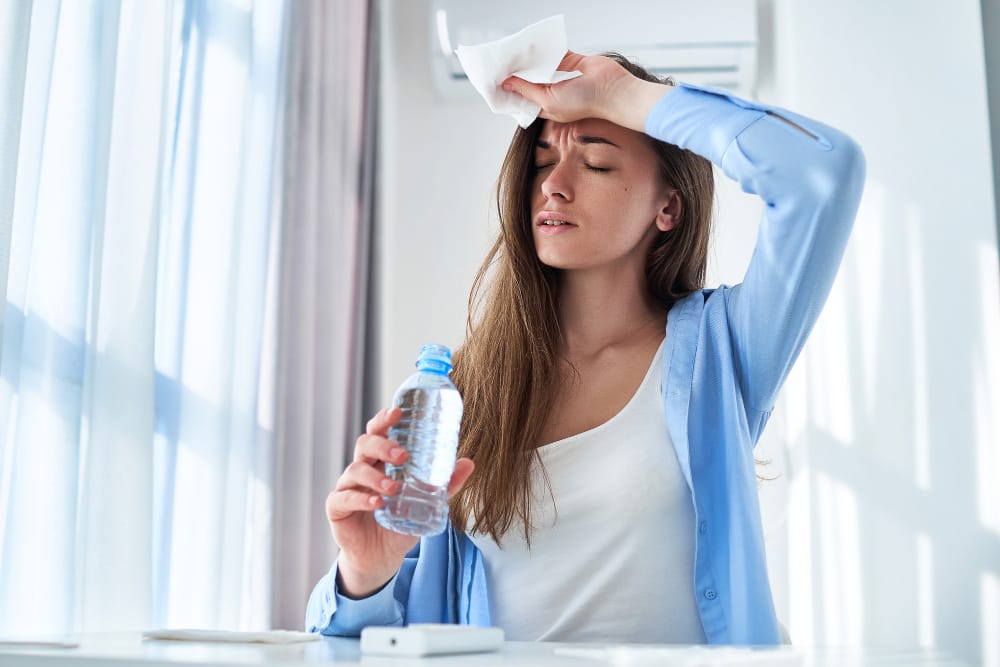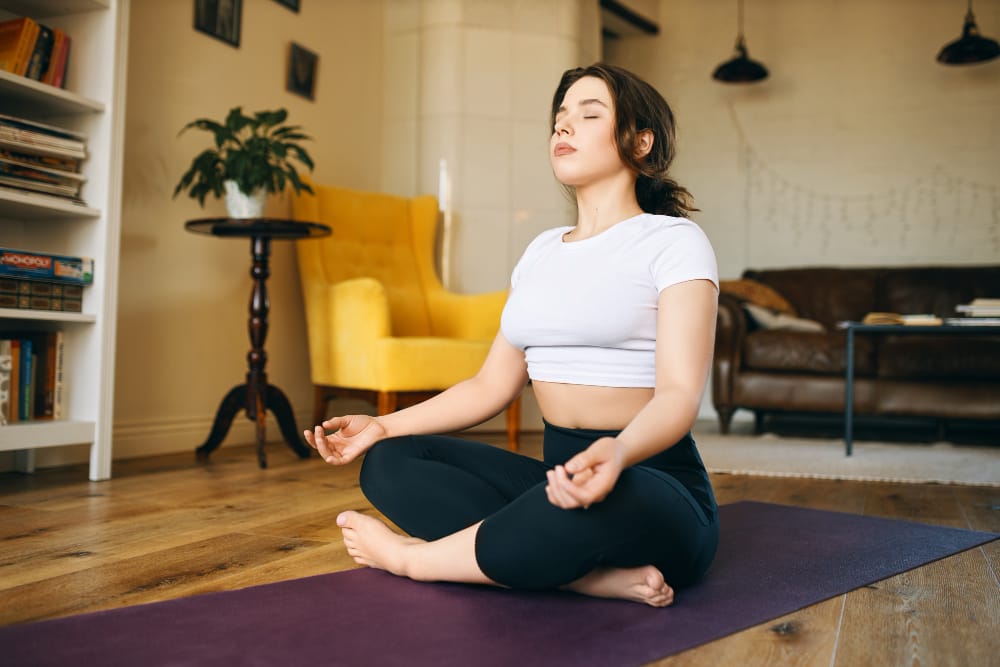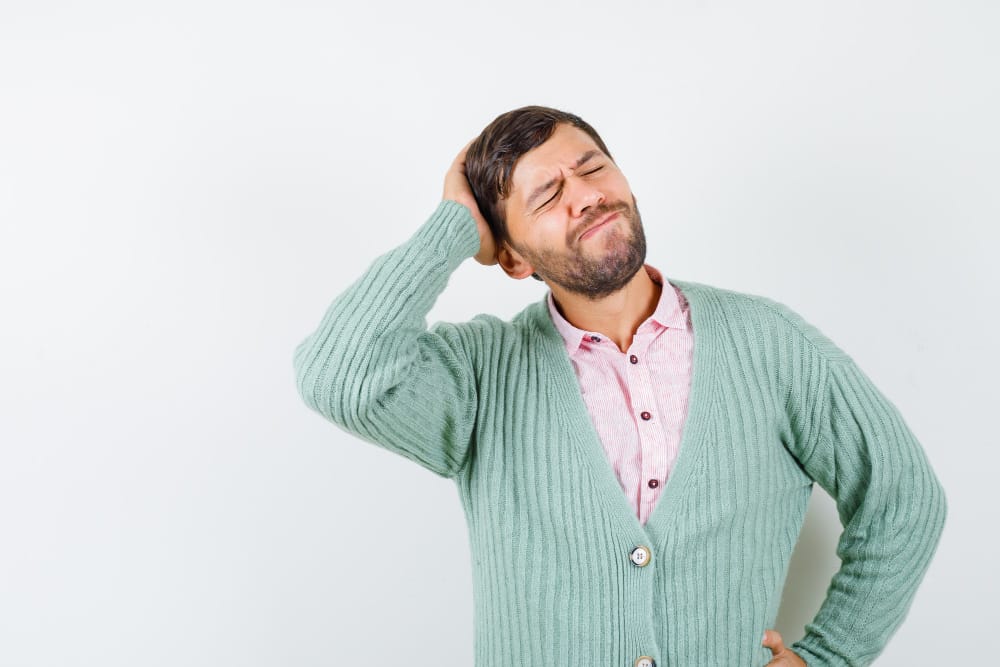There could be several reasons why the back of your head would feel hot. Some examples include the weather, multiple layers of clothes, doing physical activities with extreme movements, medical conditions, eating spicy foods, or dehydration. There are other symptoms that come with the headache, and that’s how you can determine why you’re feeling hot at the back of your head.
Possible reasons why your head feels hot
1. What you eat and/or drink
Eating spicy foods could enhance heat production in the body, while drinking too much alcohol and caffeine can make you pee more, making you lose too much fluid and leading to dehydration. Your body will then have a higher chance to overheat and work double-time to keep itself cool.
2. Heat exhaustion/heat stroke

These are some heat-related illnesses that can also be a possible reason why your head feels hot.
During this time, your body is having a hard time maintaining its core temperature. So the excess heat in your body would lead to other symptoms like headaches, nausea, muscle cramps, heavy sweating, fatigue, and even fainting.
3. Weather/external temperature
Weather-related triggers of headache may include extra-long exposure to the sun, high humidity, or sudden changes in the temperature of your surroundings. Headaches seem even more likely to happen in the summer months when temperatures are elevated.
Headache frequency may arise when it’s warmer out for a number of underlying reasons.
4. Hot flashes
Other medical conditions can cause hot flashes but most commonly because of menopause, is the time in a woman’s life when her period stops. It usually occurs naturally, most often after age 45.
Menopause happens because the woman’s ovaries stop producing estrogen and progesterone hormones.
5. Dehydration
If you are not getting enough fluids in your body, the chances of getting a headache become high, and even though dehydration is strongly linked to headaches, researchers are not sure how dehydration causes headaches.
They did acknowledge that there are likely multiple mechanisms behind dehydration-related headaches and that some people may be more prone to dehydration-related headaches than others.
How does our body regulate heat?
Our bodies constantly adapt their temperature to environmental conditions. It goes up when we exercise, for example, and it is lower at night and higher in the afternoon than in the morning.
Our internal body temperature is regulated by the hypothalamus, a part of our brain that checks our current temperature and compares it with the normal temperature of about 37°C.
If our temperature is too low, the hypothalamus makes sure that the body generates and maintains heat. On the other hand, our current body temperature is too high, heat is given off, or sweat is produced to cool the skin.
Sweating is one of our body’s primary methods to control its temperature. As it evaporates, it helps cool the skin down. Blood vessels feeding the skin also dilate, which allows warm blood to flow to the skin’s surface. This helps remove heat from the body core, but these responses are less effective as we age.
Our sweat glands produce less sweat, blood flow to the skin is reduced, and our ability to dissipate heat is compromised as a result.
How to ease a headache

- Cold compress – Place the ice pack at the back of your head, forehead and/or cheeks, basically wherever the greatest source of pain is. Just be sure to limit cold pack applications to no more than 10 minutes at a time.
- Aromatherapy – It’s the study of how certain smells can trigger positive and even healing responses in the brain. Some smells have been reported to soothe and reduce the incidence of headaches. These include peppermint extract, eucalyptus, and lavender oil.
- Massage – This may be able to reduce chronic pain as well as ease muscle tension that causes headaches. Take time to research different types of massage and get reliable referrals for a practitioner near you who can effectively address your specific pain points.
- Acupuncture – It involves applying fine, sharp needles to key areas on the body as a means of promoting energy flow. It’s thought to stimulate the body’s natural pain-relieving compounds, and according to the National Institutes of HealthTrusted Source, has been shown to reduce headache frequency and severity.
- Breathing exercises – Start by finding a quiet place with a comfortable chair in your home, office, or other location where you will not be distracted. Next, take slow, rhythmic breaths, breathing in for five seconds then out for five seconds. As you relax, your muscle tightness reduces.
- Hydration – Drink up, dehydration can contribute to a headache, but it can be easily avoided. Drinking a glass of water can help as much as electrolyte-containing beverages. Alcohol, and particularly red wine, can also lead to dehydration that triggers headaches.
- Good sleep – Lack of sleep and not getting your suggested minimum hours of sleep can lead to chronic headaches. There are several ways you can improve the amount and quality of your sleep including setting of sleep schedules, avoiding stimulants and digital exposure hours before bedtime.
FAQs
How long do hot flashes last?
A single episode may last a minute or two — or as long as 5 minutes.
The duration varies from one woman to another. About 2 in 10 women never get hot flashes, while others have hot flashes for only a very short period. Still, some women can have them for 11 years or more.
What are the different types of headaches?
Almost everyone experiences a headache once in a while. The cause, duration, and intensity of this pain can vary according to the type of headache. Some of the most common headaches are:
Tension headache – You may feel a dull, aching sensation all over your head. It isn’t throbbing. Tenderness or sensitivity around your neck, forehead, scalp, or shoulder muscles also might occur.
Cluster headache – Characterized by severe burning and piercing pain. They occur around or behind one eye or on one side of the face at a time. Symptoms may also include nasal congestion and your eye tearing up on the same side as the headache.
Migraine headache – It’s an intense pulsing from deep within your head. This pain can last for days. Migraine headaches significantly limit your ability to carry out your daily routine.
Hypertension headache – This is usually caused by high blood pressure. You can feel it on both sides of your head and is typically worse with any activity. It often has a pulsating quality.
Conclusion
Making your health the top priority should not even be an option these days, especially with all these viruses just looming around. A headache could also be as simple as a lack of sleep or could be a sign of a more serious medical condition that needs to be treated as soon as possible to avoid further complications.
If in doubt, don’t hesitate to consult your healthcare provider to receive a professional assessment and medication.


